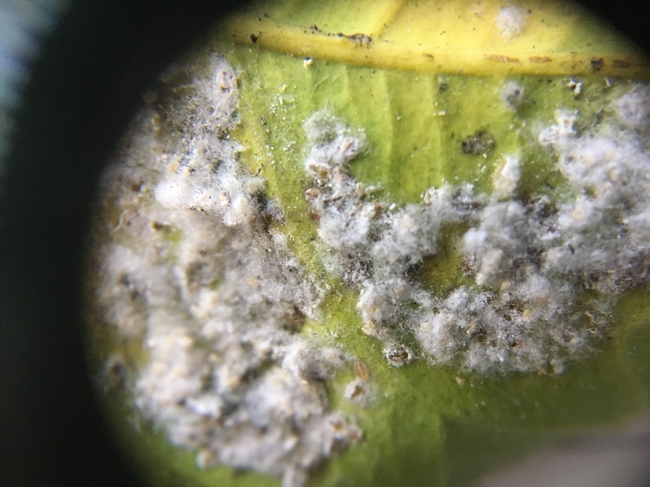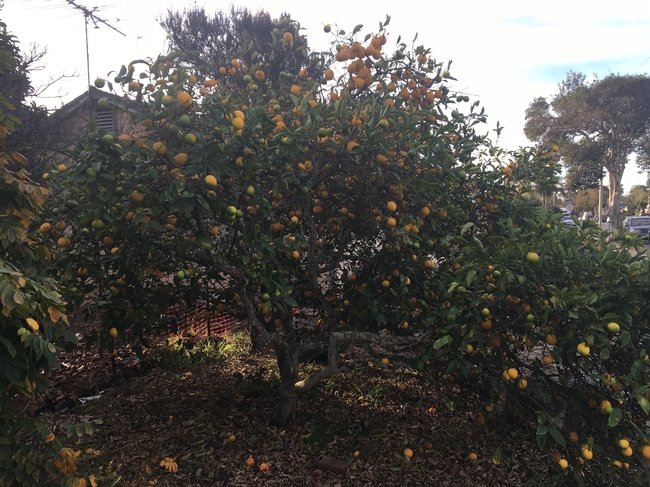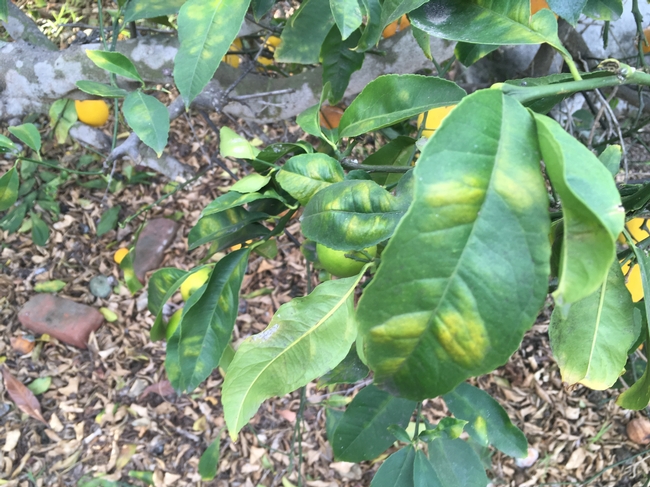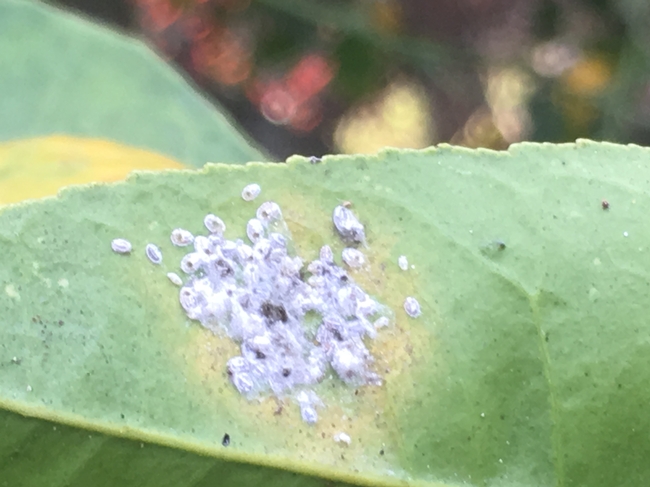
Fire, Ash, Citrus and Pests

Wow, woolly whitefly covered with waxy, curly filaments , Aleurothrixus floccosus.
One of the consequences of fire and the resulting ash is that the biocontrol agents that keep whiteflies, scale, mealybug and other pests in balance is that they will spend so much of their time preening that they don't have time to go after their prey. Lacewing larvae, minute pirate bug, ladybird larvae, parasitic wasps and others rely on moving around to get at their food sources. When they cant move fast, they stop and clean their joints to stay limber. Whitefly and scale insects just hunker down and don't need to do a lot of moving. They just breed, and without actively moving biocontrol agents, their populations can explode. Or that's my human analogy. In dusty areas or areas affected by ash, the particles get in their joints and they need to spend time cleaning in order to move fast.
Whiteflies suck phloem sap, which in some cases can cause leaves to wilt and drop when there are high numbers of whiteflies. However, the primary concern with whiteflies is the honeydew they produce. Honeydew excreted by nymphs and adults collects dust and supports the growth of sooty mold; large infestations blacken entire trees, including fruit, as well as attract ants, which interfere with the biological control of whiteflies and other pests. The sooty mold can also affect tree yields by reducing photosynthesis and requiring extra handling time for cleaning.
So pests under good control prior to a fire can get out of hand. This is a good example of a tree in the town of Ventura where ash was a problem. A seemingly clean tree, free of whitefly, started to defoliate with blotchy leaf spots. On the undersides of the leaves corresponding to the blotches are colonies of whitefly. And looking closely you can see that some of the nymphs have exit holes, indicating that they have been parasitized by a wasp. So nature is kicking in and taking it's course. The whitefly should get cleaned up soon too by some forager, such as lacewing larvae or pirate bug. No need to spray because it would just be a further disruption.
See more about whiteflies at:
http://ipm.ucanr.edu/PMG/PESTNOTES/pn7401.html
Photos: Defoliating 'Meyer' lemon tree, blotches on upper side of leaf, whitefly colonies with exit holes in some of the nymphs

lemon leaf drop

lemon leaf blotch

lemon scale
